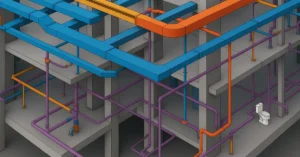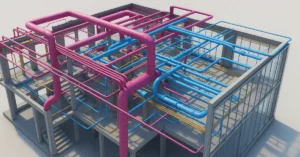The Mumbai-Ahmedabad High-Speed Rail Corridor, colloquially known as the Bullet Train, is a monumental infrastructure undertaking set to redefine India’s transportation landscape. With its 508.17 kilometers of cutting-edge rail technology, it promises to seamlessly connect the bustling metropolis of Mumbai, Maharashtra, to the vibrant city of Ahmedabad, Gujarat. Let’s embark on a journey to explore this ambitious project from a different perspective.

Fast-Tracking India’s Future with the Mumbai-Ahmedabad Bullet Train
1. Unveiling the Project
The Mumbai-Ahmedabad High-Speed Rail project is currently under construction, spearheaded by the National High-Speed Rail Corporation Ltd. (NHSRCL). The colossal endeavor comes with a substantial cost of Rs. 1.1 lakh crore (approximately US$15 billion), funded through a 50-year loan of ₹88,087 crore from Japan, offering an incredibly low-interest rate of 0.1%. Repayments for this loan are scheduled to commence 15 years after the rail line becomes operational.
2. THE FIRST GLIMPSE
While the official project deadline stands at December 2023, there is an estimated completion date of 2030 due to formidable challenges in land acquisition, primarily in the state of Maharashtra. However, the first section of the project, situated in Gujarat, is expected to be operational by 2026.
3. Navigating the Terrain
The Mumbai-Ahmedabad High-Speed Rail Corridor showcases a remarkable blend of elevated (468 km), underground (27 km, including a 2 km undersea passage at Thane Creek), and at-grade (13 km) sections. The funding for this monumental project is sourced from various channels, including the Government of Japan (JICA), the Government of India, and the Governments of Maharashtra and Gujarat.
4. Stations That Bridge Cities
This high-speed rail corridor boasts 12 strategically located stations that will serve as pivotal hubs for travelers. These include Mumbai (Bandra Kurla Complex), Thane, Virar, Boisar, Vapi, Bilimora, Surat, Bharuch, Vadodara, Anand/Nadiad, Ahmedabad, and Sabarmati. The trains on this route are poised to achieve remarkable speeds, with a maximum of 350 kmph and operational speeds of 320 kmph. The track gauge adheres to the standard 1435mm, while the signaling system employs Continuous Automatic Train Control (DS-ATC).
5. The Heart of the System
At the core of this project lies the impressive Shinkansen E5 trains, renowned for their speed and efficiency. These high-speed trains can reach a maximum speed of 350 kmph and are designed to accommodate up to 750 passengers comfortably. To ensure passenger safety, the rail corridor is equipped with an Urgent Earthquake Detection and Alarm System (UrEDAS), which automatically triggers braking in the event of an earthquake.
6. Mapping the Journey
The operational plan for this rail corridor will be coordinated from the Operational Control Centre (OCC) situated at Sabarmati. Passengers will have access to two types of services: High Speed (2.58 hours journey) and Rapid High Speed (2.07 hours journey). These services will seamlessly connect major cities and business hubs, offering efficient and swift travel options for commuters.
7. Progress on the Horizon
As of the latest updates, construction milestones have been achieved, including the completion of lodging buildings at the Vadodara Training Centre and ongoing work at the Sabarmati HSR Terminal Station. Notably, concrete pouring work on the mainline’s foundation commenced on February 10, 2021. Construction activities are also in full swing across five civil packages within Gujarat, known as C4, C5, C6, C7, and C8.
8. Ticket to the Future
While the fare structure is yet to be finalized, it is expected to be approximately 1.5 times the existing first-class AC fare on Indian Railways’ current services. The official fare structure, along with prices and rules, is anticipated to be unveiled closer to the commencement of commercial operations.
In Conclusion
The Mumbai-Ahmedabad High-Speed Rail Corridor represents a monumental stride in India’s quest to modernize its transportation infrastructure. This transformative project promises not only to reduce travel time but also to amplify economic growth and connectivity between two major urban centers. As construction advances and the dream of high-speed rail inches closer to realization, it’s evident that the Bullet Train will leave an indelible mark on the future of travel in India, setting new standards for efficiency and speed in the realm of rail transportation.
For more SketchUp tutorials you can check out https://www.sketchupguru.com/blog/
You can also check more tutorial videos for sketchup on our YouTube Channel,
https://www.youtube.com/c/SketchupGuru
To know about the Top Online 3D Rendering Courses for 2022 click,










